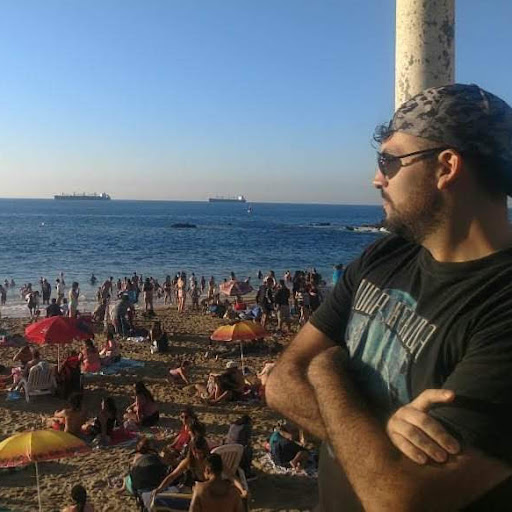Edward D Stark
Deceased
from Bakersfield, CA
- Also known as:
-
- Edward M Stark
- Edward K Stark
- Edwaard D Stark
- Maria E Stark
Edward Stark Phones & Addresses
- Bakersfield, CA
- Stanhope, NJ
- Newton, NJ
- Woodland Hills, CA
- 58 Meadow Ln, Bloomfield, NJ 07003
Work
-
Company:Golden media
-
Address:1541 Ocean Ave, Santa Monica, CA 90401
-
Phones:3103191177
-
Position:President
-
Industries:Legal Services
Education
-
Degree:JD - Juris Doctor
-
School / High School:Southwestern University School of Law
Ranks
-
Licence:California - Active
-
Date:1979
Resumes

Edward Stark
view source
Edward Stark
view source
Owner Operator
view sourceWork:
Snack Industry
Owner Operator
Owner Operator

Philanthropy
view sourceWork:
Philanthropy

Edward Stark
view source
Edward Stark
view source
Edward H Stark
view source
Edward Stark
view sourceLocation:
United States
Lawyers & Attorneys

Edward Cyril Stark, Santa Monica CA - Lawyer
view sourceAddress:
Cron, Israels & Stark
1541 Ocean Avenue Suite 200, Santa Monica, CA 90401
3103937300 (Office), 3103932029 (Fax)
1541 Ocean Avenue Suite 200, Santa Monica, CA 90401
3103937300 (Office), 3103932029 (Fax)
Licenses:
California - Active 1979
New York - Currently registered 1990
New York - Currently registered 1990
Experience:
Partner at Cron, Israels & Starks - 2011-present
Education:
Southwestern University School of Law
Degree - JD - Juris Doctor - Law
Graduated - 1979
University of California - San Diego
Degree - PhD - Doctorate
Graduated - 1974
City College of the City University
Degree - M.S.
Graduated - 1973
City University of New York, City College
Degree - B.S - Womens Studies
Graduated - 1970
Degree - JD - Juris Doctor - Law
Graduated - 1979
University of California - San Diego
Degree - PhD - Doctorate
Graduated - 1974
City College of the City University
Degree - M.S.
Graduated - 1973
City University of New York, City College
Degree - B.S - Womens Studies
Graduated - 1970
Specialties:
Administrative Law - 20%
Medical Malpractice - 20%
Personal Injury - 20%
Business - 20%
Litigation - 20%
Medical Malpractice - 20%
Personal Injury - 20%
Business - 20%
Litigation - 20%
Associations:
Committee of Bar Examiners - Vice-Chair, 2002-2003
Examinations Subcommittee, Committee of Bar Examiner - Chairman, 2001-2003
Committee of Bar Examiners - Member, 1999-2003
Minnesota State Bar Association - Member
New York State Bar Association - Member
State Bar of California - Member
Examinations Subcommittee, Committee of Bar Examiner - Chairman, 2001-2003
Committee of Bar Examiners - Member, 1999-2003
Minnesota State Bar Association - Member
New York State Bar Association - Member
State Bar of California - Member
Description:
I have split my practice between tort litigation (personal injury and medical malpractice) and business litigation. I also represent professionals in licensure...

Edward C. Stark, Santa Monica CA - Lawyer
view sourceOffice:
Cron, Israels & Stark
1541 Ocean Avenue, Suite 200, Santa Monica, CA
1541 Ocean Avenue, Suite 200, Santa Monica, CA
Specialties:
Medical Malpractice
Personal Injury
Business Law
Civil Practice
Trial Practice
Administrative Law
Personal Injury
Business Law
Civil Practice
Trial Practice
Administrative Law
ISLN:
903472874
Admitted:
1979
University:
City College of the City University of New York, B.A.
Law School:
Southwestern Law School, J.D.

Edward Stark - Lawyer
Medicine Doctors

Edward Stark
view sourceSpecialties:
Urology
Work:
Georgia Urology PAGeorgia Urology Of Gwinnett
1700 Tree Ln STE 420, Snellville, GA 30078
7709799427 (phone), 7709723846 (fax)
Georgia Urology PA
500 Medical Ctr Blvd STE 345, Lawrenceville, GA 30046
7709632451 (phone), 7709620017 (fax)
Georgia Urology PA
720 Old Snellville Hwy STE 100, Lawrenceville, GA 30044
7709632451 (phone), 7709620017 (fax)
Georgia Urology PAGeorgia Urology Gwinnett Ambulatory Surgery Center
720 Old Snellville Hwy STE 100, Lawrenceville, GA 30044
6789870877 (phone), 6789870879 (fax)
1700 Tree Ln STE 420, Snellville, GA 30078
7709799427 (phone), 7709723846 (fax)
Georgia Urology PA
500 Medical Ctr Blvd STE 345, Lawrenceville, GA 30046
7709632451 (phone), 7709620017 (fax)
Georgia Urology PA
720 Old Snellville Hwy STE 100, Lawrenceville, GA 30044
7709632451 (phone), 7709620017 (fax)
Georgia Urology PAGeorgia Urology Gwinnett Ambulatory Surgery Center
720 Old Snellville Hwy STE 100, Lawrenceville, GA 30044
6789870877 (phone), 6789870879 (fax)
Education:
Medical School
Mount Sinai School of Medicine
Graduated: 1987
Mount Sinai School of Medicine
Graduated: 1987
Procedures:
Prostate Biopsy
Circumcision
Cystoscopy
Cystourethroscopy
Kidney Stone Lithotripsy
Transurethral Resection of Prostate
Urinary Flow Tests
Vasectomy
Circumcision
Cystoscopy
Cystourethroscopy
Kidney Stone Lithotripsy
Transurethral Resection of Prostate
Urinary Flow Tests
Vasectomy
Conditions:
Calculus of the Urinary System
Male Infertility
Benign Prostatic Hypertrophy
Bladder Cancer
Erectile Dysfunction (ED)
Male Infertility
Benign Prostatic Hypertrophy
Bladder Cancer
Erectile Dysfunction (ED)
Languages:
English
Spanish
Spanish
Description:
Dr. Stark graduated from the Mount Sinai School of Medicine in 1987. He works in Lawrenceville, GA and 3 other locations and specializes in Urology. Dr. Stark is affiliated with Eastside Medical Center and Gwinnett Medical Center.
Isbn (Books And Publications)

Name / Title
Company / Classification
Phones & Addresses
President
Golden Media
Legal Services
Legal Services
1541 Ocean Ave, Santa Monica, CA 90401
President
Edward C Stark A Professional Law Corpo
Legal Services Office
Legal Services Office
1541 Ocean Ave, Santa Monica, CA 90401
President
Golden Media
Communication Services · Legal Services
Communication Services · Legal Services
1541 Ocean Ave, Santa Monica, CA 90401
3103191177
3103191177
Partner
Cron, Israels & Stark
Legal Services Office · Offices of Lawyers
Legal Services Office · Offices of Lawyers
1541 Ocean Ave, Santa Monica, CA 90401
3103937300
3103937300
Vice-President
160 West End Ave Owners Corp
Operator of Non-Residential Building
Operator of Non-Residential Building
156 W End Ave, New York, NY 10023
2124965200
2124965200
BYG TECHNOLOGIES, LLC
President
BIONIR, INC
Research Services
Research Services
160 W End Ave 3M, New York, NY 10023
160 W End Ave, New York, NY 10023
2125957046
160 W End Ave, New York, NY 10023
2125957046
President
EDWARD C. STARK, A PROFESSIONAL LAW CORPORATION
1541 Ocean Ave #200, Santa Monica, CA 90401
Us Patents
-
Method And Apparatus For Optical Interactance And Transmittance Measurements
view source -
US Patent:7142307, Nov 28, 2006
-
Filed:Mar 14, 1997
-
Appl. No.:08/818289
-
Inventors:Edward W. Stark - New York NY, US
-
International Classification:G01N 21/47
-
US Classification:356446, 356442, 3562391
-
Abstract:Apparatus and a method are disclosed for the simultaneous or rapid sequential use of two or more different separations between the source and detector of the measuring apparatus to obtain spectral measurement data in diffuse transmission or “interaction” modes of collecting optical information from a specimen. The method and apparatus subsequently combine separate data taken from two or more different pathlengths to provide discrimination against undesired information while preserving or enhancing desired information. Additional reference information to normalize the optical signal is also provided. The optical and mechanical design of the optical probe also provides for transmittance, reflectance and interactance measurements on small amounts of specimen.
-
Method And Apparatus For Optical Interactance And Transmittance Measurements
view source -
US Patent:7397566, Jul 8, 2008
-
Filed:Aug 23, 2006
-
Appl. No.:11/508774
-
Inventors:Edward W. Stark - New York NY, US
-
International Classification:G01N 21/47
-
US Classification:356446, 356442, 3562391
-
Abstract:A method, system and apparatus for improving at least one of a) optical interactance measurements, b) optical transmittance measurements and c) optical reflectance measurements. The apparatus has a probe having a body portion and an tip portion. The body portion has a central tubular element having an opening therethrough. The tip portion has a central aperture and a number that is a plurality of ring openings therein. At least some of the plurality of rings are angled with respect to a longitudinal axis of the probe. A plurality of fiber optic bundles corresponds in number at least to the number of ring openings, and at least one fiber optic bundle is arranged at one end of the longitudinal axis for receiving specimen information and at another end of the longitudinal axis connected to a detector for receiving a signal.
-
Grating Spectrometer
view source -
US Patent:49972812, Mar 5, 1991
-
Filed:Aug 24, 1989
-
Appl. No.:7/398094
-
Inventors:Edward W. Stark - New York NY
-
International Classification:G01J 318
-
US Classification:356328
-
Abstract:An improved flat field grating spectrometer for increasing the spectral resolutiion and usable spectral range. The spectrometer comprises an entrance slit or port, a concave grating, a field flattening lens and detection means encompassing the desired spectral region and capable of providing separate measurements between different regions of the spectral image plane. A second embodiment provides a beam splitter (dichroic or neutral density) placed between the grating and the detector to divert a portion of the energy at selected wavelengths through a second field flattening lens to a second detection means.
-
Glucose Related Measurement Method And Apparatus
view source -
US Patent:61241342, Sep 26, 2000
-
Filed:Aug 23, 1996
-
Appl. No.:8/697433
-
Inventors:Edward W. Stark - New York NY
-
International Classification:G01N 2131
G01N 2125
G01N 3300 -
US Classification:436 63
-
Abstract:A method of and apparatus for determining stable and labile glycated compound levels in blood. Electromagnetic energy covering a multiplicity of wavelength bands within a wavelength range from 380 nm to 2500 nm is directed into a sample volume containing blood. Portions of the energy representative of both the source energy and energy after interacting with material within the sample volume are collected. The energy portions carry information relating to the source energy and the levels of labile and stable compounds within the sample volume, respectively. The portions are converted into electrical signals representative of the intensities of the respective portions in each of the multiplicity of wavelength bands. The electrical signals are pretreated in accordance with known information to remove deviations from established reference conditions to form data signals that are a function of the fractional portion of the energy in each of the wavelength bands absorbed and scattered by the material in the measurement volume. Selected groups of the data signals are processed in accordance with chemometric models developed from analysis of such data signals together with known values of the analytes derived from measurements on a calibration set of samples larger in number than the number of wavelength bands included in the set of the selected groups of data signals to develop analyte signals representative of the amounts of glycated compounds for which chemometric models have been developed and utilized.
-
Non-Invasive Glucose Measurement Method And Apparatus
view source -
US Patent:54331978, Jul 18, 1995
-
Filed:Sep 4, 1992
-
Appl. No.:7/940691
-
Inventors:Edward W. Stark - New York NY
-
International Classification:A61B 500
-
US Classification:128633
-
Abstract:A glucose sensor to provide a non-invasive means of determining blood glucose which is of particular value in the diagnosis and treatment of diabetes. The patient's eye is illuminated with near-infrared radiation which passes into the eye through the cornea and the aqueous humor, is reflected from the iris and/or lens surface, and then passes out through the aqueous humor and cornea. The reflected radiation is collected and detected by a near-infrared sensor which measures the reflected energy in one or more wavelength bands. Comparison of the reflected energy with the source energy provides a measure of the spectral absorption by the eye which is characteristic of the composition of the cornea, the aqueous humor, and the other structures within the eye through which the energy is transmitted or from which it is reflected. In particular, the level of glucose in the aqueous humor is a function of the level of glucose in the blood so that non-invasive determinations of blood glucose may be obtained by suitable calibration relating the measured spectral absorption of the aqueous humor to the measured blood glucose level. To obtain specificity and accuracy, the spectral data at several or many wavelengths may be utilized with a multivariate calibration and prediction process to separate the glucose information from the spectral influences of interfering substances, such as water, which also absorb the near-infrared radiation within the wavelength region utilized for the measurement.
-
Automated Calibration And Standardization Apparatus
view source -
US Patent:39757277, Aug 17, 1976
-
Filed:Jun 28, 1974
-
Appl. No.:5/484027
-
Inventors:Arthur H. Mader - Mount Vernon NY
Donatas V. Gasiunas - Carmel NY
Edward W. Stark - Garden City NY -
Assignee:Technicon Instruments Corporation - Tarrytown NY
-
International Classification:H03K 1302
-
US Classification:340347NT
-
Abstract:New and improved apparatus is provided for the calibration and standardization of the analog output signal level of automated analysis equipment, which level varies as a function of the concentration of the constituent being analyzed. Such apparatus comprises an A/D converter including a dual-slope integrator for translating the output signal level to a time interval which varies as a function of the constituent. Such apparatus further includes means for generating the inverse function of the analytical function, which is applied to linearize and scale the output signal level and to convert such level directly to digital form. Also, provision is made for the calibration and standardization, on an individual basis, of each of a plurality of analytical channels in a multi-channel system.
-
Multiplicative Signal Correction Method And Apparatus
view source -
US Patent:55684009, Oct 22, 1996
-
Filed:Aug 28, 1990
-
Appl. No.:7/572534
-
Inventors:Edward W. Stark - New York NY
Harald Martens - Aas, NO -
International Classification:G06F 1700
G06F15900 -
US Classification:364498
-
Abstract:An improved method and apparatus are disclosed for processing spectral data to remove undesired variations in such data and to remove interfering information present in the data. The method land apparatus corrects multiplicative effects present in the spectral data. Additive and interferent contributions can be corrected as well. In one aspect of the method, coefficients for a selected appropriate model are applied to the input spectral data based on first and second reference spectra. The spectral data are then corrected based on the estimated coefficients at least as to multiplicative errors for producing a linear additive structure for use in calibration, validation and determination by linear multivariate analysis. The method and apparatus will improve the accuracy of spectral data structures derived from measurements Using spectroscopy, chromatography, thermal analysis, mechanical vibration and acoustic analysis, rheology, electrophoresis, image analysis and other analytical technologies producing data of similar multivariate nature.
-
Fluid Sample Cell
view source -
US Patent:42788870, Jul 14, 1981
-
Filed:Feb 4, 1980
-
Appl. No.:6/118563
-
Inventors:Victor G. Lipshutz - Tarrytown NY
Edward Stark - Yorktown Heights NY -
Assignee:Technicon Instruments Corporation - Tarrytown NY
-
International Classification:G01N 2101
G01J 104
G01N 110 -
US Classification:250432
-
Abstract:A fluid sample cell comprising a sample compartment of precisely predetermined depth bounded by opposed surfaces of a transparent window and a diffuse mirror is disclosed, and comprises inlet and outlet ports for the flow of a series of successive samples into and through said sample compartment and the spectroscopic analysis thereof by irradiation and detection of transmitted and reflected radiation.
Classmates

Edward Perry (Stark)
view sourceSchools:
Colonel Crawford High School North Robinson OH 1973-1977
Community:
Jeff Reynolds, Brenda Luebbert
Biography:
HAVEN'T SEEN ANY OF YOU IN OVER 30 YEARS. WOKE UP TO LIFE ABOUT 4 MONTHS AGO. DON'T...

Edward Stark
view sourceSchools:
Rushville Consolidated High School Rushville IN 1965-1969

Edward Stark
view sourceSchools:
Bacon High School St. Bernard OH 1954-1958
Community:
Robert Evans, Jerry Holthaus, Tom Hynes, Jean Hall

Edward Stark
view sourceSchools:
McGuffey Foundation High School Oxford OH 1945-1949
Community:
Kathy Arballo

Edward W. Stark
view sourceSchools:
St. Patricks High School Weston WV 1948-1952
Community:
Sarah Henry, Anita Lilya, Mildred Kraus, Thomas Diekmann, Bonnie Montgomery, Paula Ebbert, Thomas White, Pat Aman, Jean Doyle, Stephen Cullen, Constance Angotti, Maureen Kraus

Edward Stark
view sourceSchools:
Pomeroy High School Pomeroy OH 1962-1966
Community:
Darlene Justis, Margaret Hawk, Shirley Wright, Edith Riggs

Edward Stark | Northern V...
view source
Edward Stark | Steuben Ju...
view sourceYoutube
Myspace
Googleplus

Edward Stark
Work:
BlockNetworks - Junior Java Developer
Education:
FCFM UANL

Edward Stark
Work:
Accenture - Partner
Education:
Lehigh University - Bachelor, Carnegie Mellon University - Masters

Edward Stark
Tagline:
"Amo ganar,odio perder"

Edward Stark

Edward Stark

Edward Stark

Edward Stark

Edward Stark

Edward Stark
view source
Edward Stark
view source
Edward Stark
view source
Ty Edward Stark
view source
Anthy Edward Stark
view source
Anthy Edward Stark
view source
Ty Edward Stark
view source
Edward Anthony Stark
view sourceFlickr
Get Report for Edward D Stark from Bakersfield, CADeceased




















